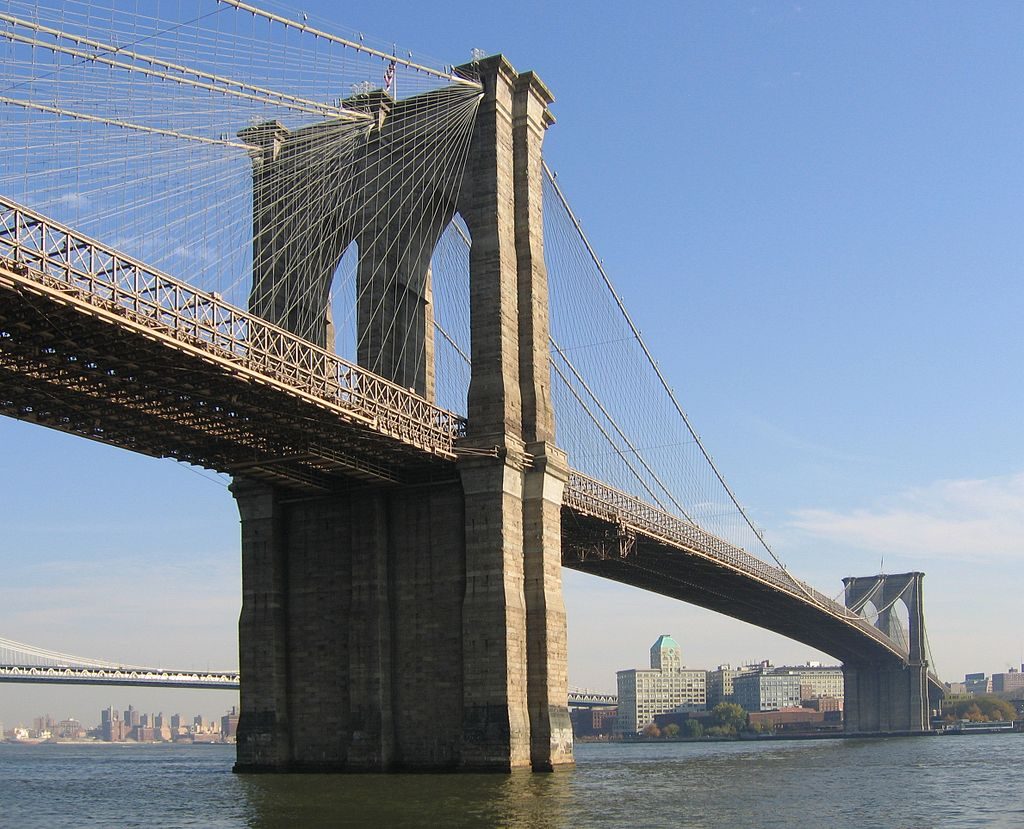Drinking and Drive-Overs


The Brooklyn Bridge, pictured above, connects Manhattan and Brooklyn. It took fourteen years to build — construction began in 1867 and completed in 1883 — at the cost of, in today’s dollars, about $400 million. That’s cheap compared to modern construction efforts (but it came at the cost of 27 lives), and yet, it was enough to cause the city to take on more debt than it wanted.
That was a problem — but it was hardly the only problem caused by the bridge. Another? The construction of the bridge required the destruction of some businesses near the river banks which were in the bridge’s eventual path. Specifically, as NPR notes, “on the Brooklyn shore of the East River, Rackey’s Wine Company was doing steady business, and on the Manhattan side, Luyties & Co., sold its liquor to thirsty New Yorkers.” They were in need of a place to store their wine, as they were about to lose access to a sizeable chunk of real estate.
The bridge itself became that solution.
The bridge, famously (and as seen above), has two towers (called “anchorages”), one on the Manhattan side and one on the Brooklyn side. The cables which hold up the bridge itself are anchored to the towers (hence the name), but by and large are wasted space otherwise. And that gave the bridge’s chief engineer, John Roebling, an idea: let’s address both problems at once — turn them into wine cellars. NPR explains:
The design of the bridge would allow for two wine cellars, one on each shore, along with several other vaulted chambers, to be incorporated into construction. The chambers would be rented out to local businesses, which used them mostly for storage, to help pay off the city’s debt.
The idea worked. It was a good place to store wine, it turned out; the temperature in these cellars hovered, constantly, around 60° F (about 15.5° C), which is pretty close to the expert-recommended target temperature range. As a result, as MNN.com notes, the wine cellars were “widely praised” and “[compared] favorably to the famous wine cellars of Europe.” And they were also a great place for a soiree — until about 1910, the cellars also doubled as a wine bar, attracting revelers who wished for a unique, somewhat secret experience.
Unfortunately for us, we can’t share in that experience. The wine cellars of the Brooklyn Bridge are no more, or at least, no longer wine cellars. They were emptied in the 1910s as the Prohibition movement picked up steam, and while Prohibition ended in 1933, the wine never came back. Today, the cellars are still there but are closed to the public; they’re used, per PSFK, to store “maintenance materials.”
Bonus fact: Early on in the Brooklyn Bridge’s history, traffic across it was pretty light — because, as the city found, the public was squeamish about the bridge’s safety. That changed on May 17, 1884. How so? As the New York Times explains, on that day, showman P.T. Barnum led a parade of elephants, safely led by the famous Jumbo, across the bridge, demonstrating how safe it was.
From the Archives: The Greedy Cup: How Greek philosopher Pythagoras used physics to stop people from overindulging on wine.
Related: “Twenty-One Elephants and Still Standing,” a book for elementary schoolers about Barnum’s stunt. 4.4 stars across 25 reviews.
